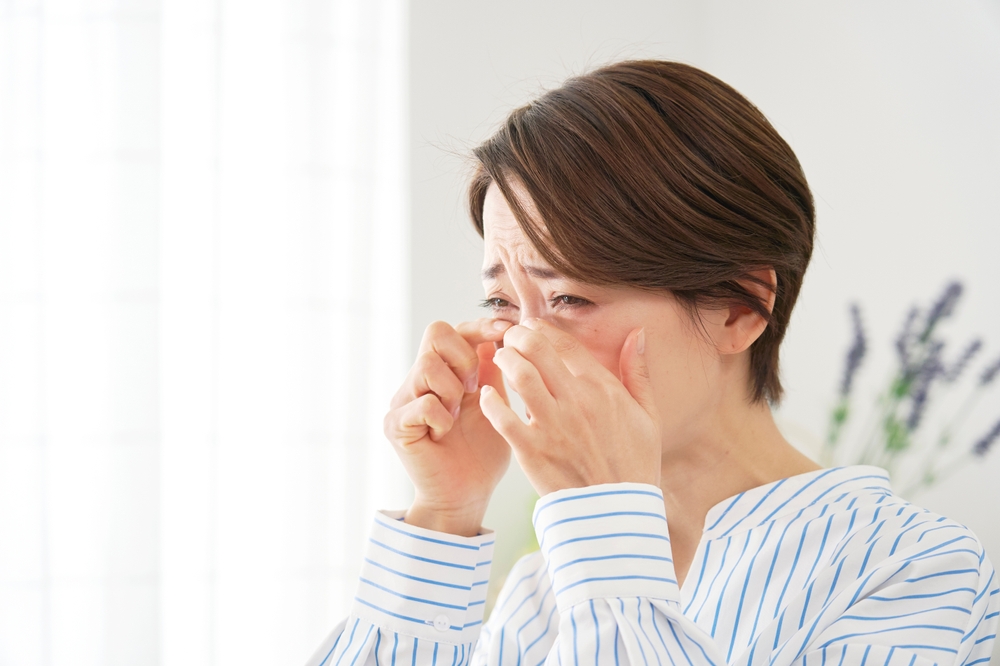
Chronic dry eye is a condition that affects the tear film, the protective film that covers the eye surface. A stable and balanced tear film helps to keep the eyes healthy and comfortable. Inadequate tear film can cause discomfort and symptoms, such as itching, burning, and blurry vision. Several factors can affect the tear film, resulting in chronic dry eyes.
What Causes Chronic Dry Eyes
Chronic dry eye is a multifactorial condition with numerous causes and risk factors. Hormonal changes result in the production of fewer tears as people age, leading to dry eyes, especially among menopausal women. Certain diseases, such as lupus, thyroid disease, and rheumatoid arthritis, can also cause dry eyes.
Blepharitis and entropion are eyelid conditions that can lead to chronic dry eye. Certain medications, long-term contact lens use, refractive eye surgery, and prolonged computer use can cause dry eyes.
Symptoms of Chronic Dry Eyes
Several symptoms can indicate you may have chronic dry eyes. They include:
A burning or stinging sensation
Blurry vision, especially when reading or using the computer
A gritty or scratchy feeling
Red or irritated eyes
Excessive tearing or eye-watering
Difficulty wearing contact lenses
Mucus discharge from the eyes
Diagnosing Chronic Dry Eye
An eye exam can help to determine whether you have chronic dry eyes and the underlying cause. Your ophthalmologist can recommend the best treatment for your condition. During the exam, the doctor will assess your eye surface and eyelids.
Tear film tests will determine the quality and volume of tears produced. Some diagnostic tests include the slit lamp exam, Schirmer's test, and tear breakup time (TBUT) test. The doctor may conduct antibody tests and other tests to determine the underlying cause of the dry eyes.
Treatment of Chronic Dry Eyes
Chronic dry eye does not go away on its own. The condition has no cure, but there are ways to relieve the symptoms. Treatment will depend on the underlying cause. Options include:
Artificial tears. Eye drops can help to keep the eyes lubricated. There are several preservative-free brands, and you can find the one that works for you.
Prescription eye drops. If nonprescription drops fail to provide relief, the doctor can recommend prescription eye drops.
Punctal plugs. The ophthalmologist may recommend blocking the tear ducts to prevent fast tear evaporation. It will keep the eyes well-lubricated.
In-office procedures. Common treatment options are thermal pulsation therapy (LipiFlow) and intense pulsed light (IPL) therapy.
Therapeutic contact lenses. Special contact lenses, such as rigid scleral lenses, can help to protect the eyes and keep them lubricated.
Preventing Dry Eyes
Making changes to your environment can help to prevent dry eyes. Eyelid massage, eyelid scrubs, and placing a warm compress over the eyes can help relieve dry eye symptoms. Avoid environmental triggers that exacerbate the symptoms.
Using a humidifier in your room can also help. Take frequent breaks when using the computer or reading. Studies show that omega-3 fatty acids can boost tear production, preventing dry eyes. Scheduling regular eye exams will help keep your eyes healthy.
For more on chronic dry eyes, visit Reed Optical at our office in Claremont or Sunapee, New Hampshire. Call (603) 543-3125 to book an appointment today.






